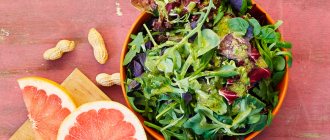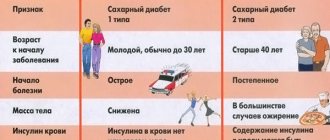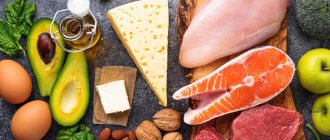How to lose 12 kg in a week with a diet of buckwheat and kefir, and at the same time maintain health? Read about all the intricacies of the buckwheat and kefir diet here!
Every year, women's magazines regularly publish recipes for new diets. Some are quickly forgotten, others become classics. As it turned out, neither Kim Kardashian’s fashionable diet, nor the Japanese diet, nor the “6 petals” diet, nor the protein diet could outshine buckwheat. But it was invented by Moscow nutritionist Alevtina Moleeva back in the middle of the last century. The principle of the weight loss system is simple - for 2 weeks you need to eat one grain without salt and sugar.
How to lose weight with pleasure
To lose 12 kg, it is enough to survive on a meager diet for only 7 days. This means that from Sunday until next Monday you eat only kernels. However, not all so simple. Despite the absence of hunger pangs, it is difficult to eat exclusively bland porridge. After a couple of days, the body will definitely require dietary variety and, in its absence, will drive you into depression.
In order not to put yourself under stress and hold out until the end, it is better to flavor it. No, neither butter nor meat, but kefir, Antonovka, pineapple, vegetables. Vegetables and fruits:
- will supply fiber to the body;
- activate peristalsis,
- compensate for the taste.
The most persistent ones can not indulge themselves and make do with porridge, tea and water. For the benefit of the body, do not forget to drink lemon juice diluted with water - 1 tsp. per glass. Drink:
- will replenish the supply of vitamin C;
- enriches the taste;
- normalizes blood pH;
- will speed up fat burning.
Disadvantages of the kefir-buckwheat diet and contraindications
The main argument of fans of a diet based on buckwheat and kefir is that cereal cleanses the gastrointestinal tract. Doctors confirm this, but with reservations. People who regularly consume sufficient amounts of natural fiber do not need to cleanse their stomach and intestines. And those who decide on a buckwheat diet in the hope of cleansing the body at the same time will not achieve much success in this matter, since even a two-week diet is not able to cope with a general cleansing of the gastrointestinal tract. If you set yourself the task of not only losing weight, but also cleansing your gastrointestinal tract, then train yourself to eat 0.5 kg of raw vegetables and 300 grams of fruit every day.
A serious disadvantage of a diet based on buckwheat and kefir is that you will have to follow a strict nutritional system. Like any mono-diet, buckwheat suffers from a lack of vitamins and microelements, because only these two food products cannot supply the entire spectrum of nutrients we need. In severe cases, deficiency of vitamins and minerals can lead to hypovitaminosis. Therefore, before starting a diet, we recommend that you consult a doctor. If you do not consult a doctor in advance, your health may be harmed and your health will worsen during the diet. The person will begin to experience headaches and weakness, and problems with blood pressure may arise. There is a high risk of exacerbation of various chronic diseases.
This weight loss system is also addictive. It makes no sense to stick to the diet for more than two weeks, as the body will begin to get used to buckwheat, and there will be no further loss of excess weight. It is recommended to repeat the diet no earlier than after a month. During this period, try to stick to a healthy diet so as not to trigger weight gain. When the first negative sensations and health problems appear, you should immediately stop eating the diet. Like any diet, buckwheat-kefir diet has a number of contraindications related to human health. The list of diseases for which you should not try to lose excess weight using such a diet includes:
- diabetes mellitus of any degree;
- diseases of the cardiovascular system;
- inflammation of the pancreas;
- any tumors (malignant and benign);
- renal failure;
- low hemoglobin level;
- increased stomach acidity;
- hypertension;
- peptic ulcers;
- gastritis.
Middle-aged women should refrain from a diet based on buckwheat and kefir if symptoms of menopause are severe. You should not greatly reduce your diet if you have chronic infectious skin diseases such as psoriasis.
You cannot limit yourself to mono-diets during pregnancy and breastfeeding, as well as in cases of depression and any mental disorders.
What are the benefits of diet
It's all about the chemical composition of the cereal. The nutritious cereal contains about 15% vegetable protein, the amino acid lysine, methionine, 2.8 fats, 3.2% carbohydrates. The calorie content of the product is 310. The rich vitamin and mineral complex covers the body's nutritional needs. For a week buckwheat:
- will remove metabolic products:
- cleanses the walls of the intestines and blood vessels;
- will allow the digestive organs to rest;
- will improve the condition of the skin.
How to cook
The recipe for diet porridge is simple. For this purpose:
- take the cereal;
- pour 1:2 boiling water;
- wrap it in a towel and leave it until the morning.
It's better to cook in a thermos. Some people use warm, unsweetened yogurt instead of water. The washed grains are poured into 3 fingers of fermented milk and left until they swell. She's ready for breakfast.
Al dente buckwheat is no less healthy. Slightly undercooked cereal is well-filled and easy to digest, and cooks in no more than 10 minutes. However, the glycemic index of cooked porridge is slightly higher.
Unlike other power systems, there are no volume restrictions. Eat as much as you like. In the first days, take 2-3 glasses of kernels. After two, it’s unlikely that you’ll be able to eat more than 200 g of cereal. Eat crumbly porridge in 5-6 approaches. The last meal is 3 hours before bedtime. Yogurt without filler will help you overcome the feeling of hunger in the evening.
Buckwheat porridge with kefir and cinnamon
You can drink buckwheat with tea, black coffee, or unsweetened rose hips. The fresh taste is organically complemented by kefir. In addition, it contains a lot of protein, calcium, and vitamin A. It normalizes flora, suppresses putrefactive processes and activates digestive processes.
Eat it fresh. It is better to cook at home using milk mushroom or pharmacy starter. For effectiveness, many people choose low-fat. In vain, calcium is well absorbed with fermented milk products with a fat content of at least 2.5%. Some people prefer to pour kefir or yogurt over the porridge and sprinkle with cinnamon. Spice:
- regulates blood glucose levels;
- adds sweetness;
- dulls hunger;
- speeds up metabolism.
Try it with pineapple
The low-calorie fruit (48 kcal/100g) contains a lot of nutrients - ascorbic acid, vitamins A, group B, calcium, magnesium. It improves food digestion, regulates cholesterol and blood pressure. It also contains bromelain, which accelerates the breakdown of fats. One gram of “slimness enzyme” helps you lose 1 kg. It can be eaten before and after meals. For variety, replace kefir with pineapple juice. 1 liter requires 2 kg of pulp. You can do it differently: turn 100 g of pineapple in a blender and add a couple of drops of lemon juice.
Supplement with dried fruits
To prevent the desire to eat buckwheat from disappearing after 3 days, change the additives. If you are tired of porridge with apples, sometimes use “antidepressants” - prunes or figs, dried apricots, dry slices of apples and pears. Choose 1 type and eat 5 pieces during the day. Dry fruits contain a lot of carbohydrates, so they suppress appetite and cravings for sweets. Drink a glass of warm water in slow sips, put 2 dried fruits in your mouth and dissolve them in your mouth. After 5 minutes the hunger was gone!
Contraindications for use
Any ingredient can not only have a beneficial effect on the body, but also cause harm. Before talking about the disadvantages, you need to take into account the personal characteristics of each person. For some, the product is a lifeline, while for others it is forbidden to eat.
View this post on Instagram
Posted by Ekaterina_Richi_ (@ekaterina_richi_) March 24, 2020 at 5:30 PDT
If a person feels that he needs to lose pounds, then he first needs to talk to a specialist. After the consultation, he will give valuable advice on admission. Only then can you go on a diet.
Cannot be used in the following situations:
- any gastrointestinal diseases;
- Buckwheat irritates the already inflamed intestines. This is especially evident in the presence of gastrointestinal disease;
- taking it will result in inflammation and provoke chronic diseases.
If you decide to rejuvenate and improve your health, then first talk to the doctor and tell him about your illnesses. And only then will they tell you whether you can go on a diet or not.
Crunch cabbage and radishes
On the sixth day, introduce fresh vegetables into your diet. Choose according to your taste - tomatoes, cucumbers, leafy greens, radishes or any type of cabbage.
- In the absence of gastritis, eat colored (30 Kcal). It improves intestinal microflora, supplies antioxidants, folic acid, vitamins, minerals, and protects against tumors.
- 100 g of cabbage contains only 24 kcal. The vegetable is rich in fiber, vitamin C, P, U, K, calcium and phosphorus. Chinese cabbage contains 12 kcal. There are about the same number of them in broccoli.
Prepare a salad from vegetables and season with lemon juice and kefir. Radishes contain no more than 15 kcal. It is rich in phosphorus, iron, vitamins. In addition, it will help break down adipocytes and stimulate the smooth muscles of the intestine. Nutritionists recommend eating salads made from root vegetables and tops in combination with greens during the season. Radishes are made into a salad with kefir and eaten as a bite, like a cucumber.
The benefits of buckwheat for weight loss and health
The average duration of a buckwheat diet is one week, during which 2-4 kilograms of excess weight can be lost. It is good not only for weight loss, but also for maintaining a normal weight after a person achieves an ideal shape. If you choose a non-rigid dietary system based on buckwheat and kefir, then you can stick to it for up to two weeks. The main advantage noted by many people who have tried the kefir-buckwheat diet is that the cereal perfectly saturates the body, which means you don’t have to go hungry. At the same time, it cleanses the walls of the stomach and intestines, naturally removing particles of decay products that have accumulated in them from the body. Buckwheat is famous for its rich composition of vitamins and microelements:
- phosphorus;
- iron;
- copper;
- zinc;
- manganese.
The calorie content of 100 grams of dry cereal is 132 calories. But ready-made porridge will be lower in energy value, since it is saturated with water, and the same hundred grams already has a smaller number of kernels. Buckwheat porridge, prepared without adding salt, contains only 97 calories per 100 grams. If you add salt to the dish, the calorie content will increase to 103 kcal.
Doctors and nutritionists recommend regularly including buckwheat in the diet for people suffering from chronic swelling, liver problems, high blood pressure and anemia (anemia). The cereal contains vegetable protein, which in its characteristics can replace protein of animal origin, and is used as a material for the formation of bone and muscle tissue. The advantage of vegetable protein is that it is completely absorbed by the body, and a person does not feel heaviness in the stomach, as from a piece of meat, for example.
Regular consumption of buckwheat not only stimulates weight loss, but also has a positive effect on human health in general. With its help, you can strengthen the immune system, strengthen the walls of blood vessels and improve blood circulation. Buckwheat helps normalize the functioning of the liver, stomach and intestines. Under its influence, cholesterol levels in the blood decrease, and toxins are naturally eliminated from the body.
How to get out of a diet correctly
On day 8, start introducing other foods into your diet. Instead of porridge, eat 2 boiled eggs and grain toast for breakfast. For lunch, give preference to easily digestible protein and salad. Make roasted vegetables for dinner. Fruits are suitable for snacks. And, of course, drink water.
To maintain the result, forget about foods with fast carbohydrates. Eat more fish, poultry, cottage cheese, unsalted feta cheese, tofu cheese, combining them with fresh salads. Forgiven green buckwheat, wheat, lentils, and chickpeas are good for health and figure. If you give up bad eating habits, this will already allow you to partially maintain the results achieved. If the week on buckwheat with kefir was easy and you were satisfied with the results, repeat it next month and try to hold out for 2 weeks.
List of permitted and prohibited products
According to reviews of the buckwheat and kefir diet, it helps you lose 12 kg in a week quite effectively. However, it is recommended to take into account the list of acceptable products. These include the following:
- tomatoes;
- cucumbers;
- apples;
- greenery;
- oranges;
- green tea;
- breads.
There are foods that you should definitely avoid. Contraindications include:
- sweets;
- milk;
- fast food;
- butter;
- bakery;
- alcoholic drinks.











